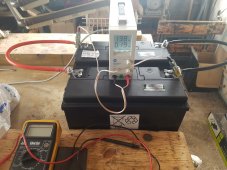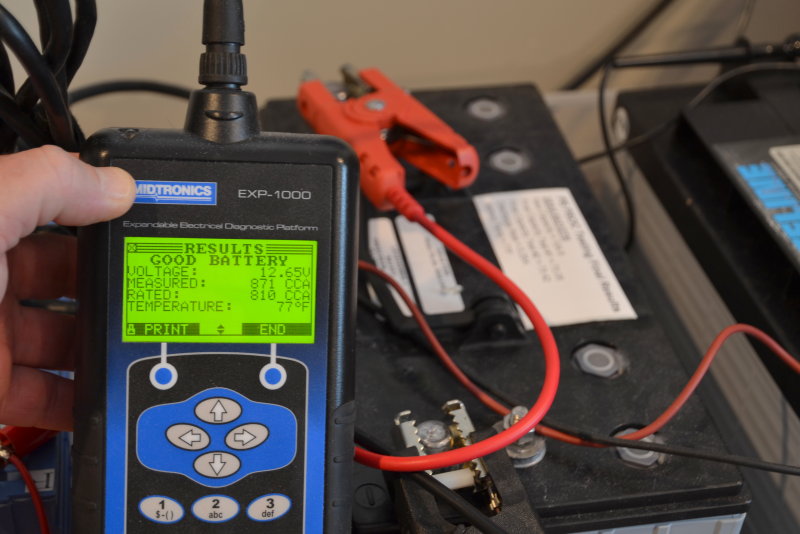I have two retired 5 year old sealed lead acid batteries, 12V and 110Ah each, and I want to check the remaining capacity. One battery wouldn't initially take a charge, but I forced it with a little higher bulk, and a little higher float, overnight, before setting float back down to normal, and leaving it on float for a few days. First time off though, I used a normal car battery charger, and it didn't take a proper charge overnight, with the voltage plummeting as soon as I disconnected the charger. Now though, after a prolonged recovery charge, as described above, using my solar charge controller, it's been holding at near 13V for a few days, just very slowly going down, just as the other one did from the get go. Maybe it was soft sulphated, and it's now been 'fixed'?
Anyway, I now have them both sitting here at about 13V, and I'm wondering if they have anything like the capacity they did when new, but I'm not sure of exactly how to go about checking it.
I have one set up now, ready to go, with a car headlamp connected to the load of my solar charge controller, which will be well within spec for the load. I have the app available to measure the current, but I'm going to use my multi-meter to measure the voltage directly at the battery terminals, rather than trusting the SCC, and the app, because on trial runs, with this reasonable load, being delivered from the solar charge controller, there's quite a lot of volt drop causing the SCC to report low values. I also have a camera, looking at my volt meter, so that when taking a reading for current in the app, I can also keep an eye on the voltage at the same time, which I'll also make a note of.
Tests show the lamp will draw around 4.3 amps, and I can repeatedly take the actual value, whilst writing the time down, so I know how many Ah I've used, and can keep going for the whole day, say for 12 hours, or more if need be, by which time I should have used near half of the listed capacity. Or, terminate early, if I get too low a voltage. I'll take a reading every 5 minutes, for the first few, because I expect the current to fall off quickly, at the beginning, due to initial voltage sag, and then try to take a reading every 15 minutes, but may spread that out, if the current starts holding well, after the start. I'll then just multiply the current, by the fraction of the hour that has elapsed since the last reading, and keep a running tally, which I think should give me the Ah used.
My questions are this:
Is this plan a reasonable approach?
Is aiming for 50%, adequate for a test, or should I go deeper?
How do I know what 50% is, when it's under load, if I terminate early based on voltage? Early practice runs show a significant rebound, or recovery of the voltage, after a 24 hour rest.
Should I just set a target, underload voltage, of say 11.5V, and keep going until then, or is that too high to get the true capacity?
If the trick is to keep going until it's actually dead, voltage drops off a cliff, won't that harm the battery, or is it the only way to know the capacity for sure, and for just one full cycle would be worth it to find out?
I'm thinking I might have to do that, as remaining capacity by voltage seems to be all over the place on the internet, as far as I can see, with most saying to be sure you need the specifics for the battery from the manufacturer, but these are just some generic leisure batteries, so I'm not expecting to find that.
I'd be thankful to hear any thoughts you guys may have.






